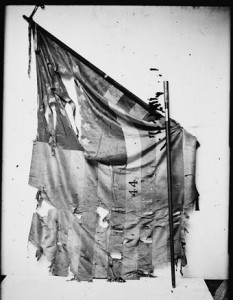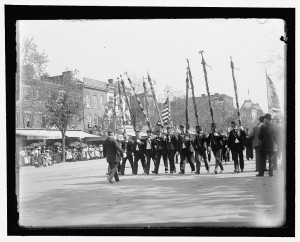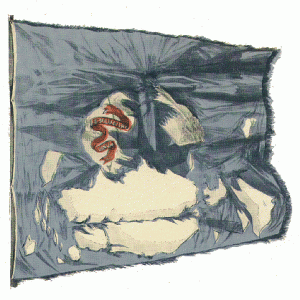Fixing flags and saving standards

They were torn at the Battle of Gettysburg, shot full of holes at Bull Run and ruined by storms in encampments from Maine to Florida. They were the worn-out flags of the Civil War – Old Glory, the Stars and Bars of the Confederacy, and regimental colors.
An example is a flag carried by the 16th Regiment of Ohio volunteers. In 1863, its captain wrote to the Soldiers’ Aid Society in Wooster, Ohio, to thank its members for supporting the troops. Then he added: “The most acceptable thing they could send us now would be to present the regiment with a new set of Colors. The old ones are very much tattered and torn.”
He explained that “the shells of the enemy” had damaged the banners, one of which had “received more than a dozen balls through it.”

A century-and-a-half later, efforts are under way, especially in the South, to preserve and restore fading flags from the War Between the States. An example is the State of Tennessee’s “Save Our Flags” effort. Special license plates can be purchased, and the income goes “toward the conservation and preservation of historic flags.”
According to the group’s website (www.saveourflags.org), “Once conserved, [the flags] will remain safely at the museum for the enjoyment of future generations.”
At the North Carolina Museum of History in Raleigh, another Civil War flag was restored after $6,500 was raised by military re-enactors. The flag, which had been held in storage for its protection, is now on display.

“It’s been 100 years since the public has seen this flag,” said a museum official. “Now it’s cleaned and conserved in a way that will protect it for another 40 or 50 years.”
Another banner, this one taken from a Confederate ship by a Union officer, has been returned to Virginia for display in a museum. It has a large tear in it, and its white field has turned brown. It will eventually be displayed at the Hampton Roads Naval Museum in Virginia, but only after preservation efforts are carried out.
Through such efforts, modern-day people are doing what the Ohio officer urged in 1863 about his tattered standard: “The flag should be preserved.”
By James Breig
